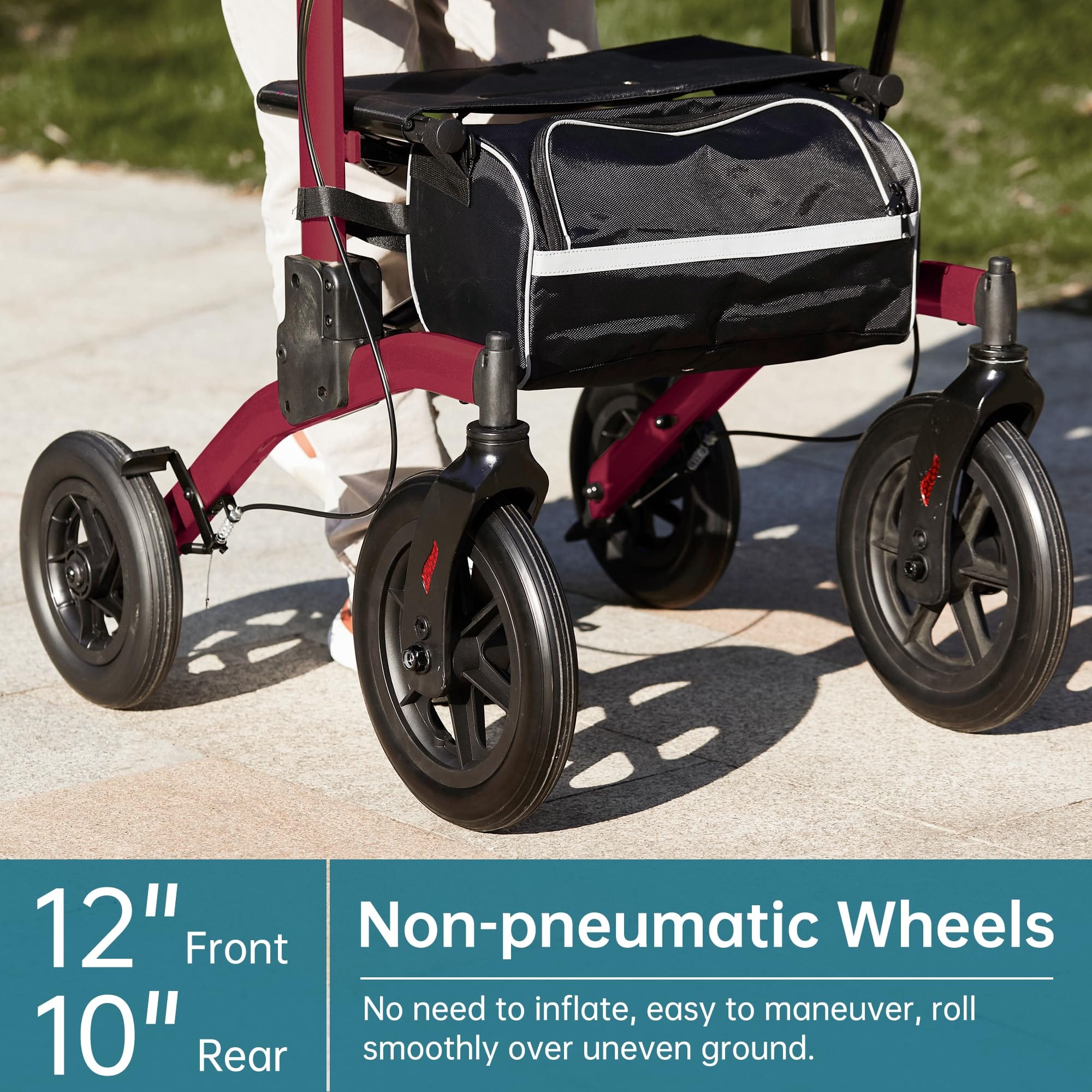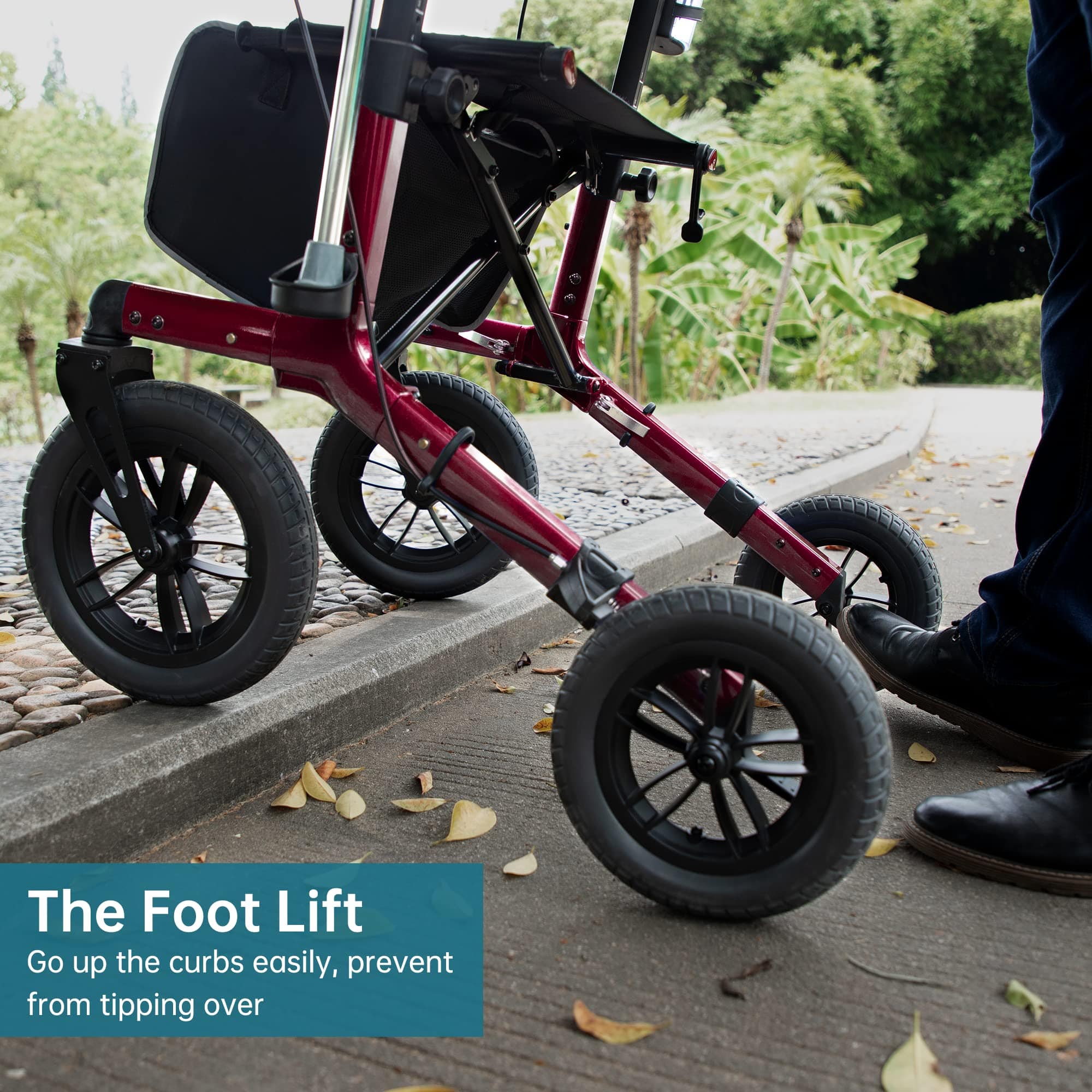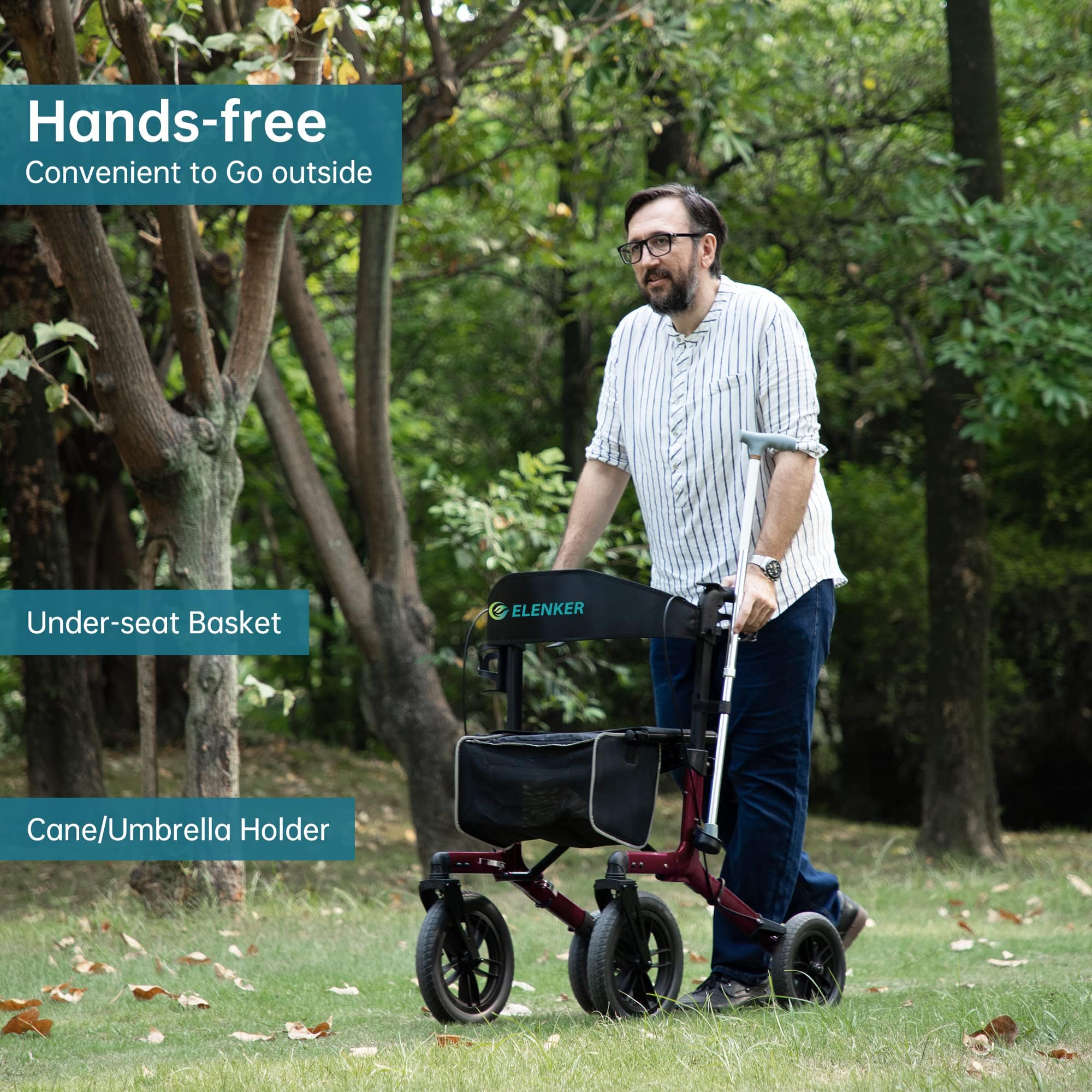How Often Should You Replace the Tires on Your Rollator Walker?
Apr 02, 2025
If you rely on a rollator walker to get around, you know how important smooth-rolling tires are. Whether you're using a rolling walker indoors, cruising the sidewalks, or tackling trails with an all terrain rollator walker, your tires take a beating. But how do you know when it's time for a change? Let's find it out in a way that makes sense.
How Long Do Rollator Walker Tires Last?
The short answer? It depends. The lifespan of your tires depends on factors like how often you use your rollator walker with seat, the type of terrain you roll over, and the quality of the tires themselves.
On average, rollator walker tires can last anywhere from six months to a few years. If you use yours daily on rough terrain, you might need to replace them sooner. If you only take it out occasionally and mostly indoors, they'll last much longer.
Signs Your Tires Need Replacing
Not sure if it's time for new tires? Here are some clear signs to watch for:
1. Worn Tread
Just like with car tires, rollator walker tires have tread to provide grip. If that tread is worn down, you might notice your walker slipping more or not gripping surfaces as well as it used to. That's a good indicator it's time for new tires.

HFK-9240-2 All-Terrain Rollator Walker with 12”Non-pneumatic Wheels
2. Cracks or Splits
Over time, rubber and foam tires can dry out and crack. If you see any visible cracks or splits, don't wait—replace them before they fall apart completely.
3. Uneven or Bumpy Ride
If your walker isn't rolling as smoothly as it once did, or if it feels like it's bouncing or dragging, the tires might be worn down unevenly. A fresh set of tires can make a world of difference.
4. Difficulty Turning or Maneuvering
When your rollator walker becomes harder to steer or push, your tires could be the culprit. Worn-out tires don't grip the ground well, making movement more challenging.
5. Noisy Wheels
If you hear strange squeaking, rattling, or grinding sounds when rolling, check your tires. Sometimes, the issue might be loose or dirty parts, but worn tires can also make noise.
How Terrain Affects Tire Wear
Where you use your rolling walker plays a huge role in how often you need to replace the tires.
Smooth indoor floors: Tires last the longest here since there's minimal friction.
Sidewalks and pavement: These surfaces cause moderate wear over time.
Grass, gravel, and dirt trails: If you use an all terrain rollator walker, you're exposing the tires to more rugged conditions, meaning they'll wear out faster.
Hilly areas: Going up and down inclines puts extra stress on the tires, leading to quicker wear.
If you regularly use your rollator walker outdoors on rough surfaces, check your tires more frequently for signs of wear.

KLD-9212 ELENKER® All-Terrain Rollator Walker 12” with foot lift
Types of Rollator Walker Tires & Their Lifespan
Not all rollator walker tires are the same. Here's a quick look at the different types and how they hold up:
Solid Rubber Tires – These last the longest and are best for indoor use. They don't wear down as fast but can crack over time.
Foam-Filled Tires – A good balance between durability and comfort. They don't go flat but can wear down quicker than solid rubber tires.
Air-Filled Tires – Great for outdoor use and shock absorption but require maintenance and are prone to flats.
If you have an all terrain rollator walker, chances are you have air-filled or thick foam tires, which will need replacing more frequently than solid rubber ones.
How to Make Your Tires Last Longer
Want to get the most out of your rollator walker tires? Follow these simple maintenance tips:
Keep them clean – Wipe down your tires regularly to remove dirt, dust, and debris that can cause wear.
Check for damage – Inspect your tires weekly for cracks, bald spots, or uneven wear.
Rotate the wheels – Some rollators allow for wheel rotation, which helps even out wear over time.
Avoid rough terrain when possible – If you don't need to use your walker on gravel or rough paths, stick to smoother surfaces to extend tire life.
Store properly – Keep your rollator walker in a cool, dry place to prevent rubber tires from drying out and cracking.

KLD-9212 ELENKER® All-Terrain Rollator Walker 12”
How to Replace Rollator Walker Tires
If it's time for new tires, don't worry—it's usually a simple fix. Here's how you can replace them:
Check Your Manual – Your rollator walker manual will tell you what size and type of tires you need.
Order the Right Tires – Make sure to get compatible replacements. Many brands sell replacement tires online.
Remove the Old Tires – Depending on your walker, you might need a wrench or screwdriver to take off the wheels.
Install the New Tires – Pop them on, secure them properly, and make sure they spin freely.
Test Your Walker – Before heading out, give your walker a test run to ensure the tires are secure and rolling smoothly.
If you're unsure about replacing the tires yourself, a local medical supply store or mobility aid repair shop can help.
Your rollator walker's tires play a huge role in keeping you safe and mobile. Keeping an eye on their condition and replacing them when needed will ensure a smooth, comfortable, and worry-free walking experience. Whether you're using a rollator walker with seat for everyday errands or an all terrain rollator walker for outdoor adventures, good tires make all the difference.
So, how often should you replace the tires? If you use your walker every day, check them every 6–12 months. If you only use it occasionally, inspect them at least once a year. And if you ever feel like your walker isn't rolling as it should, don't wait—swap out those tires and get back to moving with ease!






